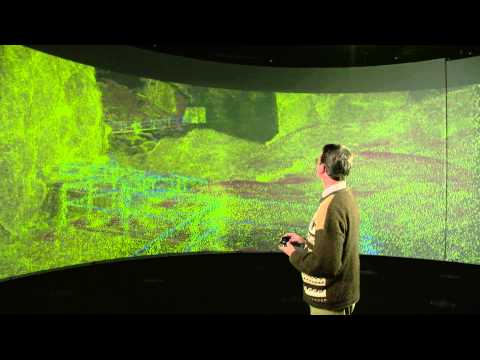CIC has recently launched a new strand which focuses on making visible how people work in teams, both face-to-face and online. This is led by Educational Data Scientist Roberto Martinez-Maldonado, who joined us in September 2015. He brings expertise in the use of technologies that can detect what is happening in face-to-face meetings, such as Kinect sensors to differentiate learner’s actions, microphone arrays to capture who is speaking when, and multitouch surfaces.
Roberto and the CIC team are currently exploring the following collaborative scenarios at UTS to advance the work of both students and researchers.
Tackling Wicked Problems with Digital Ink
The team are in discussion with academics and researchers in IML, FASS and FEIT about the best ways to support Creative Group Intelligence. They have recently started to explore how to integrate pen-based interaction in an ecology of tools to support collaborative and creative tasks, since analysis shows many key moments in group collaboration are mediated by hand-written artefacts. This is particularly important for idea generation and creative processes where collective intelligence from diverse expertises can be crucial to solving ‘wicked problems’ — complex, contested, societal dilemmas.
Exploring Students’ Memories for Reflection in the Data Arena 
Data visualisations are a great tool to make sense of information as they help link visual and cognitive perception (our eyes and thoughts). However when it comes to reflection, meta-cognition is also required and students need to process previous memories and experiences. In collaboration with researchers at DAB and FEIT, the CIC team is investigating the role of embodied and collaborative interactions in data visualisation to support student’s reflection. They are exploring the potential that the 360deg/3D UTS Data Arena may have to explore ways to support students in gaining an understanding about what happened during the semester and help re-build their stories.
 Data science and visualisation in medical simulation
Data science and visualisation in medical simulation
We are discussing how CIC’s work can augment the work of academics and researchers in nursing and midwifery simulation, in the Faculty of Health. Medical students and physicians treat simulated patients in the form of plastic mannequins which mimic symptoms, examination and treatment options. Simulation sessions at UTS are led by competent medical professionals with teaching and acting skills. The instructor is responsible for explaining the setting and conducting a meaningful debriefing, they are also responsible for enhancing the setting by simulating everything that the mannequin is not capable of. The combination of mannequin technology and skilled instructors can create an effective, highly immersive learning environment for training procedural knowledge and sensorimotor skills. The goal of the project is to collect student data to uncover key traces in a team’s process, in order to support post-hoc meta-analysis and reflections of their own actions (or lead by the instructor).
For more information please visit our Project Page.
